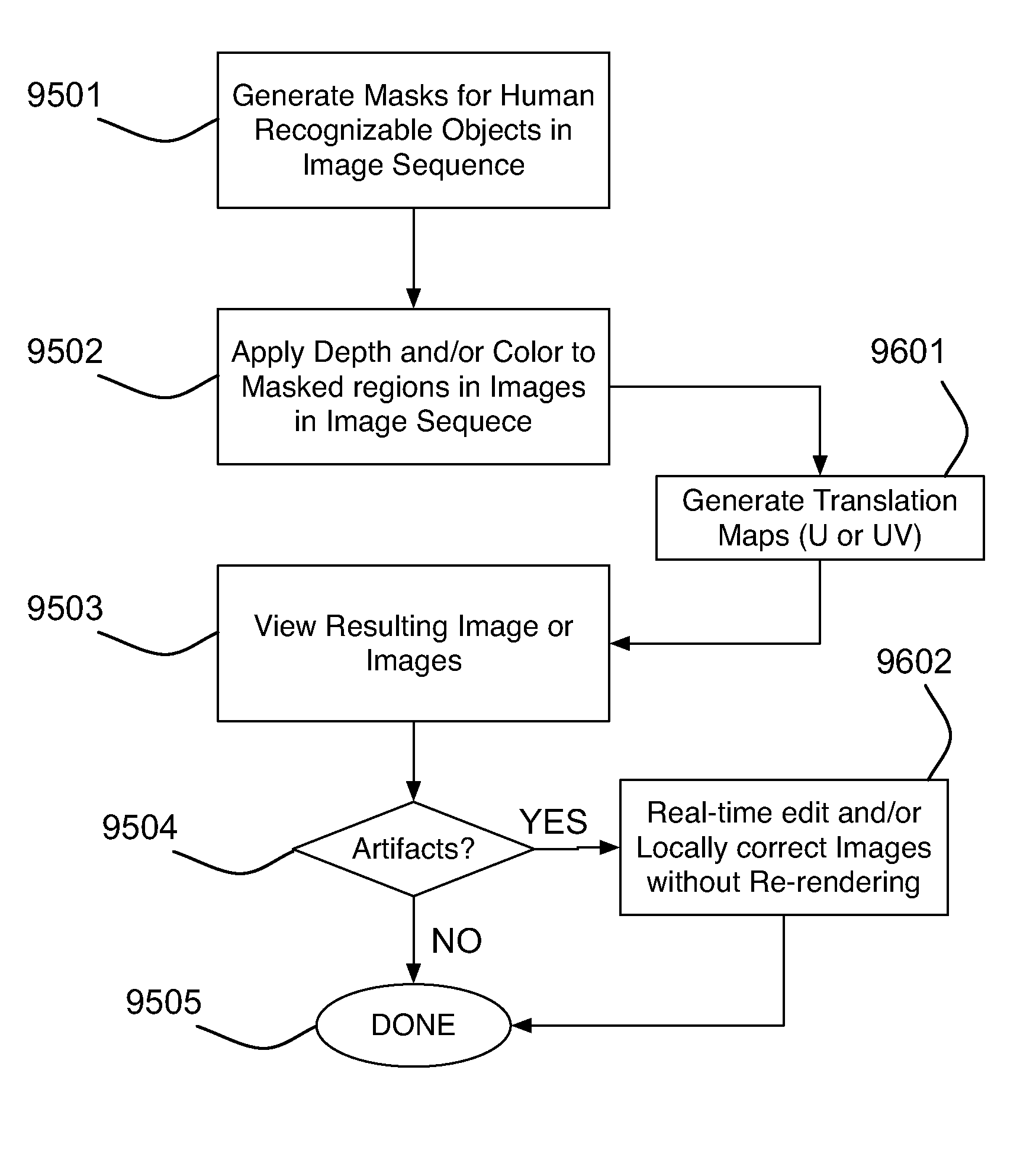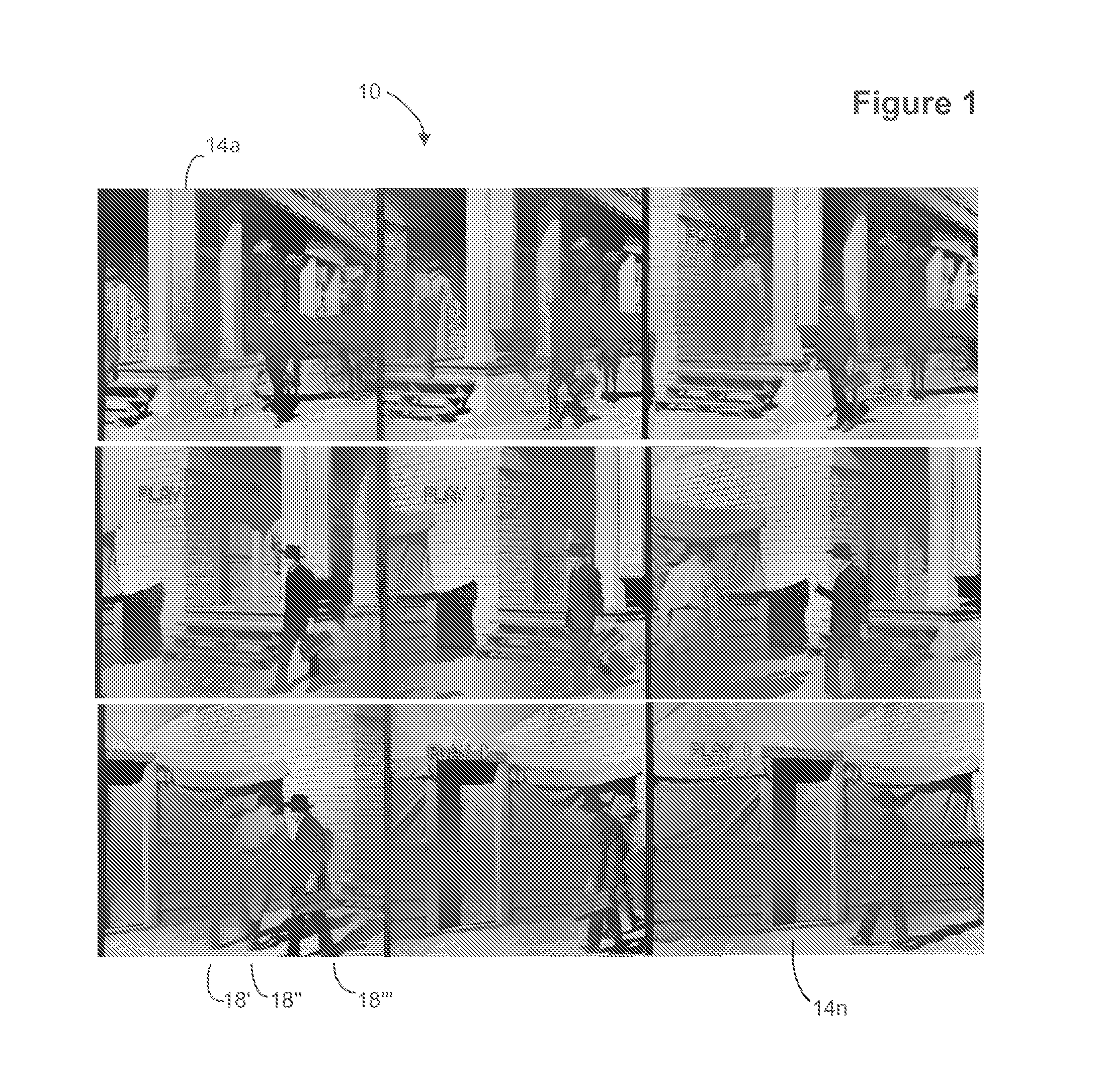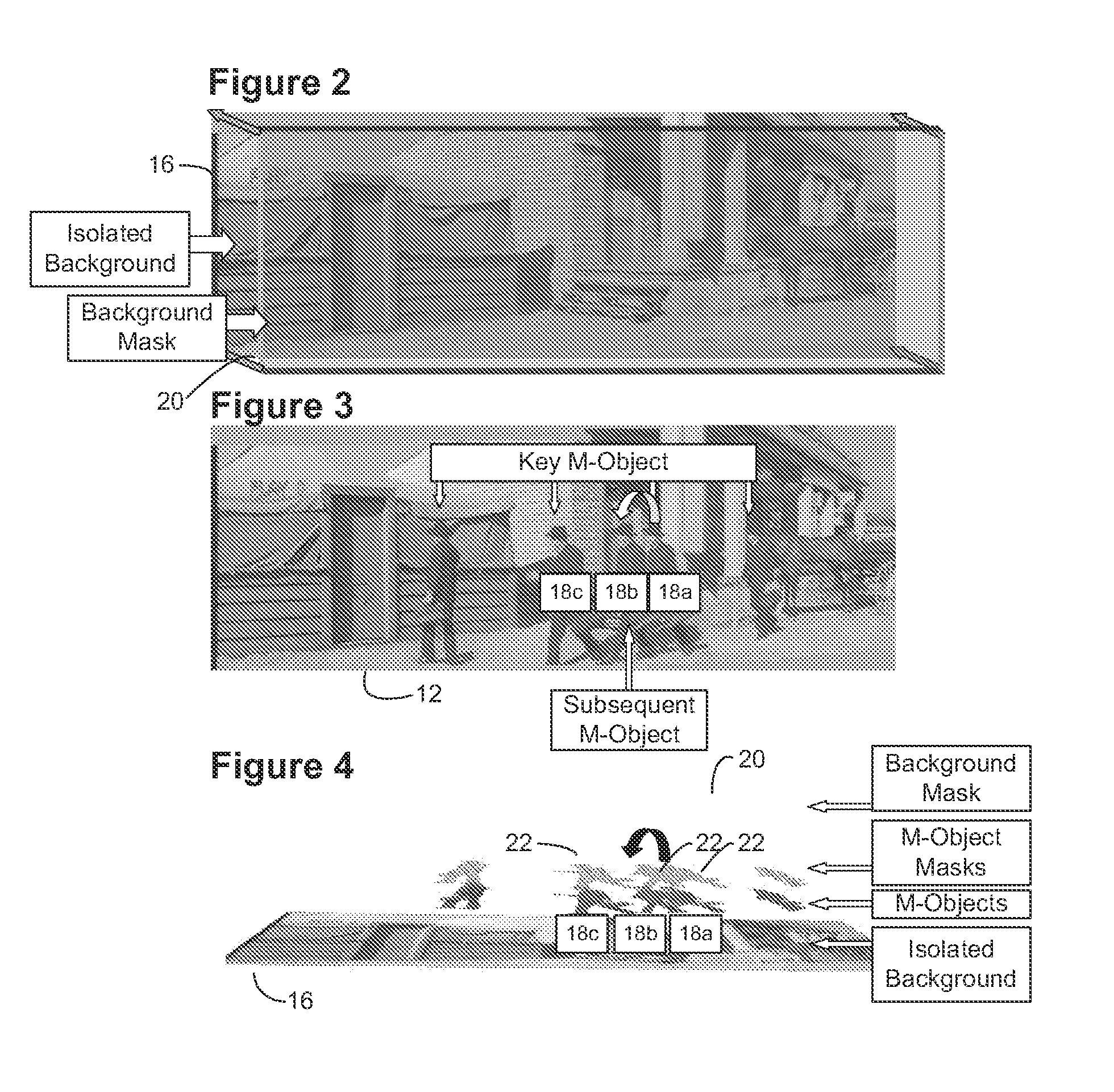[0013]1. Automatic mask fitting using Fast Fourier Transform and Gradient Decent Calculations based on luminance and pattern matching which references the same masked area of the key frame followed by all prior subsequent frames in succession. Since the computer system implementing embodiments of the invention can reshape at least the outlines of masks from frame to frame, large amounts of labor can be saved from this process that traditionally has been done by hand. In 2D to 3D conversion projects, sub-masks can be adjusted manually within a region of interest when a human recognizable object rotates for example, and this process can be “tweened” such that the computer system automatically adjusts sub-masks from frame to frame between key frames to save additional labor.
[0019]For colorization projects, the single background image representing the series of camera pan images is color designed using multiple color transform look up tables limited only by the number of pixels in the display. This allows the designer to include as much detail as desired including air brushing of mask information and other mask application techniques that provide maximum creative expression. For depth conversion projects, (i.e., two-dimensional to three-dimensional movie conversion for example), the single background image representing the series of camera pan images may be utilized to set depths of the various items in the background. Once the background color / depth design is completed the mask information is transferred automatically to all the frames that were used to create the single composited image. In this manner, color or depth is performed once per multiple images and / or scene instead of once per frame, with color / depth information automatically spread to individual frames via embodiments of the invention. Masks from colorization projects may be combined or grouped for depth conversion projects since the colorization masks may contain more sub-areas than a depth conversion mask. For example, for a coloration project, a person's face may have several masks applied to areas such as lips, eyes, hair, while a depth conversion project may only require an outline of the person's head or an outline of a person's nose, or a few geometric shape sub-masks to which to apply depth. Masks from a colorization project can be utilized as a starting point for a depth conversion project since defining the outlines of human recognizable objects by itself is time consuming and can be utilized to start the depth conversion masking process to save time. Any computer-generated elements at the background level may be applied to the single background image.
[0022]Static Camera Scenes With and Without Film Weave, Minor Camera Following and Camera Drift: In scenes where there is minor camera movement or film weave resulting from the sprocket transfer from 35 mm or 16 mm film to digital format, the motion objects are first fully masked using the techniques listed above. All frames in the scene are then processed automatically to create a single image that represents both the static foreground elements and background elements, eliminating all masked moving objects where they both occlude and expose the background.
[0025]Embodiments of the invention enable real-time editing of 3D images without re-rendering for example to alter layers / colors / masks and / or remove artifacts and to minimize or eliminate iterative workflow paths back through different workgroups by generating translation files that can be utilized as portable pixel-wise editing files. For example, a mask group takes source images and creates masks for items, areas or human recognizable objects in each frame of a sequence of images that make up a movie. The depth augmentation group applies depths, and for example shapes, to the masks created by the mask group. When rendering an image pair, left and right viewpoint images and left and right translation files may be generated by one or more embodiments of the invention. The left and right viewpoint images allow 3D viewing of the original 2D image. The translation files specify the pixel offsets for each source pixel in the original 2D image, for example in the form of UV or U maps. These files are generally related to an alpha mask for each layer, for example a layer for an actress, a layer for a door, a layer for a background, etc. These translation files, or maps are passed from the depth augmentation group that renders 3D images, to the quality assurance workgroup. This allows the quality assurance workgroup (or other workgroup such as the depth augmentation group) to perform real-time editing of 3D images without re-rendering for example to alter layers / colors / masks and / or remove artifacts such as masking errors without delays associated with processing time / re-rendering and / or iterative workflow that requires such re-rendering or sending the masks back to the mask group for rework, wherein the mask group may be in a third world country with unskilled labor on the other side of the globe. In addition, when rendering the left and right images, i.e., 3D images, the Z depth of regions within the image, such as actors for example, may also be passed along with the alpha mask to the quality assurance group, who may then adjust depth as well without re-rendering with the original rendering software. This may be performed for example with generated missing background data from any layer so as to allow “downstream” real-time editing without re-rendering or ray-tracing for example. Quality assurance may give feedback to the masking group or depth augmentation group for individuals so that these individuals may be instructed to produce work product as desired for the given project, without waiting for, or requiring the upstream groups to rework anything for the current project. This allows for feedback yet eliminates iterative delays involved with sending work product back for rework and the associated delay for waiting for the reworked work product. Elimination of iterations such as this provide a huge savings in wall-time, or end-to-end time that a conversion project takes, thereby increasing profits and minimizing the workforce needed to implement the workflow.
 Login to View More
Login to View More  Login to View More
Login to View More 


